The southern-Dalmatian island of Korcula pronounced: 'Korchula') stretches parallel with the nearby mainland in the west-east direction. It is 46.8 km long, its average width is 5.3 to 7.8 km, it covers an area of 270 km , and is the sixth largest Adriatic island. The Peljesac Channel, which separates it from Peljesac peninsula, is 1,270 m wide at its narrowest point. The shoreline of the Korcula island is 182 km long, and the shorelines of the nearby islets another 54 km. According to 2001 census, there are 16,182 inhabitants on the island which makes the island of Korcula the second most populated island in Croatia (after the island of Krk). Croats make up 96.8% of the population on this island. The coast of the island of Korcula is indented with a series of bays and islets. The vegetation is rich and varied, the most widespread is the holm oak (evergreen oak), also highlights aleppo pine, coastal pine, black pine and cypress. This is one of the most densely wooded islands in the Adriatic. The landscape of the island of Korcula is enriched by olive groves and vineyards which represent a traditional source of life and income for the population of the island of Korcula.
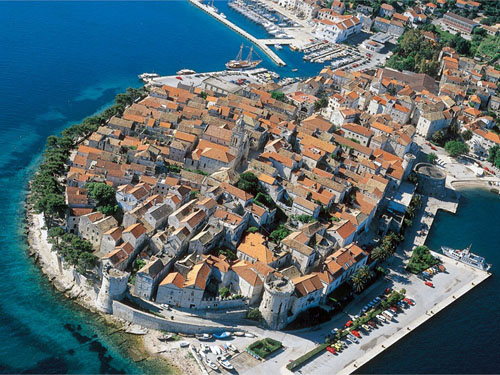
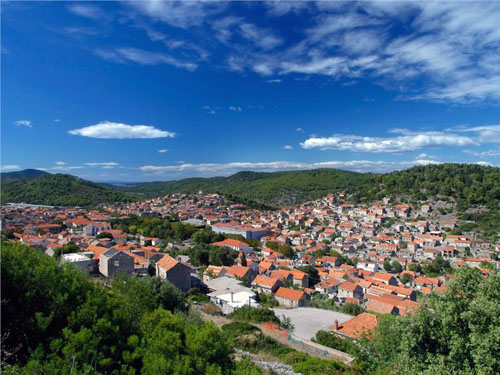
Korcula is considered as the pearl of the southern Dalmatia and offers to its visitors picturesque walled old town of Korcula, magnificent coastal panoramas, dreamlike fishing villages and idyllic coves. Away from the tourist-places on the coast of the island Korcula, in the island's interior one discovers a unique green landscape with panoramic views and hidden cultural treasure, which one can discover either on foot or by bicycle. The coast of the island of Korcula is very indented with a large number of bays and coves. It's north shore is rather low and easily accessible with several natural harbours sheltered from the southern (jugo) and easterly winds: Korcula, Banja, Racisce, Vrbovica, Babina, Prigradica. The south shore is more indented but steep in places, with cliffs rising up to 30 m out of the sea in places. There are many anchorages and bays sheltered from the northern but open to the southern winds: Zavalatica, Rasohatica, Orlandusa, Pavja luka, Pupnatska luka, Prizba, Grscica, Brna etc., and is sheltered from both the bura and the jugo. The island also includes the towns of Vela Luka and Blato and the coastal villages of Lumbarda and Racisce, and in the interior Zrnovo, Pupnat, Smokvica and Cara.
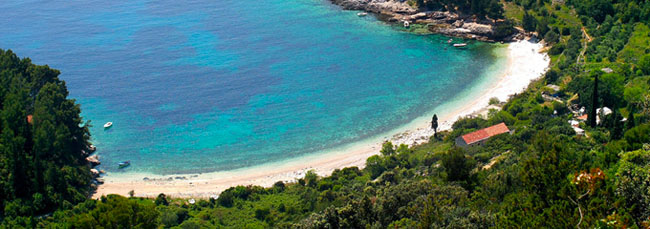
Like most of the Croatian islands, the Greeks, who gave it the name Korkyra Melaina or 'Black Corfu' for its dark and densely wooded appearance, first settled Korcula, in the 6th century before Christ, at first next to today's Vela Luka. Sometime later, at the other end of the island, the territory of today Lumbarda, the Greeks arrived from the island of Vis (Issa), establishing a significant settlement. In the first century AD the island of Korcula as well as the whole of Dalmatia were conquered by the Romans who named it Illyricum. In the 7th century Croats came to the Adriatic and soon founded their own state, which was first a principality, and after 925 years of the first coronation of King Tomislav becomes a kingdom and the island of Korcula was part of the kingdom of Croatia. In 1000 Venetian Doge Peter II. Orseolo conquered the Dalmatian towns and islands, and Korcula then fell under the government of Venice. When Napoleon overthrew the Venetian Republic, Dalmatia was for a short time ruled by Austria, but soon the French, then the English, to finally Dalmatia came under Austrian administration under which it remained until the end of the First World War (1918). After the democratic elections in 1990 in a referendum Croatian population opted to exit from Yugoslavia and declared the independent state of the Republic of Croatia. The stormy history of Korcula remained written in stone and can be seen on every piece of this unique island.
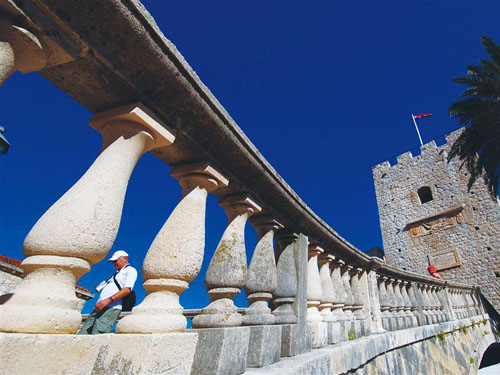
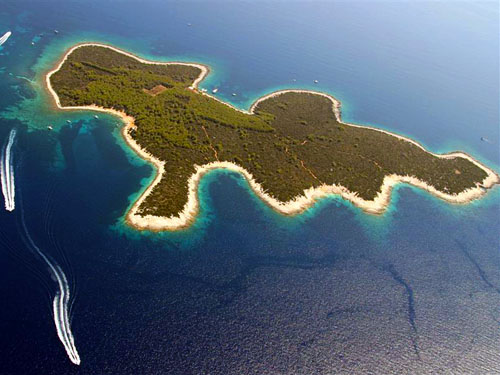
Today, the island of Korčula represents a unique fusion of beautiful nature, thousands of years of cultural tradition and history, and modern tourism. Numerous beautiful beaches and bays, luxurious hotels and summer houses, centuries old olive groves and vineyards, and ancient towns and villages on the island which seem as if they have remained lost in some long past time attract tourist from all over the world to this island. The vicinity of Dubrovnik as well as island Mljet gives visitors to Korcula unique opportunity to spend time at this unspoiled Island as well as to visit effortlessly Mljet national park, Dubrovnik, Makarska Riviera, UNESCO's city or Mostar and Neretva River. Good ferry connections with the mainland and other islands, offers lots of possibilities for those that want to explore Central and Southern Dalmatia. Accommodation is mainly available in private holiday houses, apartments and rooms. There are several hotels on the island of Korcula, but the most of the visitors choose private accommodation because it offers them much better experience of the local traditions, customs and a way to meet local people and their way of life. Korcula accommodation in private houses and apartments offers good standard accommodation for a reasonable price. Holiday houses and apartments are available in all parts of the island, both on the coast and in the hinterland of the island. In our offer, we are happy to present you with most detailed and largest offer of accommodation in private apartments on the island of Korcula. Whether you choose to book accommodation in a private apartment or in a hotel, we invite you to meet and explore the island of Korcula. We are sure that if you come once, you will surely come again.

Click to view the best offer of accommodation in private apartments, rooms and villas to rent on the island of Korcula. Very fast and simple - your dream accommodation is just few clicks away!
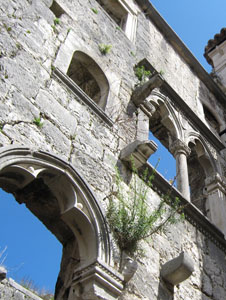 Marco Polo, the first globetrotter and world's biggest explorer was born in the town of Korcula, in year 1254. The house of Marco Polo is located in the vicinity of the Cathedral of San Marco. He travelled the world for 24 years and after touring Central Asia, making a fortune at the court of Kublai Khan, returned as a commander of a fleet through the Strait of Hormuz. He was imprisoned by the Genoese, who defeated their rival Venice near the island of Korcula, spent time in jail, where he recounted his adventures to his cell mate, a certain Rustichello of Pisa who took good note of those talks and later he wrote "The Million Book". Marco Polo, who died 1324 after passing by the Grand Council of the Republic of Venice, was finally buried in the church of San Lorenzo in Venice, but those who bet on Korcula as the city of his birth argue that "Depolo" was and still is a common surname in the area of the town of Korcula, among many other proofs. In the town of Korcula, you can visit the birth house of Marco Polo and also the exhibition of Marco Polo where you can view details from his life and journeys.
Marco Polo, the first globetrotter and world's biggest explorer was born in the town of Korcula, in year 1254. The house of Marco Polo is located in the vicinity of the Cathedral of San Marco. He travelled the world for 24 years and after touring Central Asia, making a fortune at the court of Kublai Khan, returned as a commander of a fleet through the Strait of Hormuz. He was imprisoned by the Genoese, who defeated their rival Venice near the island of Korcula, spent time in jail, where he recounted his adventures to his cell mate, a certain Rustichello of Pisa who took good note of those talks and later he wrote "The Million Book". Marco Polo, who died 1324 after passing by the Grand Council of the Republic of Venice, was finally buried in the church of San Lorenzo in Venice, but those who bet on Korcula as the city of his birth argue that "Depolo" was and still is a common surname in the area of the town of Korcula, among many other proofs. In the town of Korcula, you can visit the birth house of Marco Polo and also the exhibition of Marco Polo where you can view details from his life and journeys.
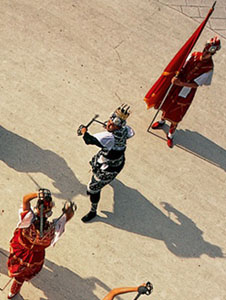 Given the rich and diverse history of the island of Korcula, this is an island and diverse cultural heritage. It is important to emphasize the rich folklore heritage of these islands, one of the richest in all the islands of the Mediterranean. For centuries, the local population preserved knight games in Vela Luka (Kumpanija), Blato (Kumpanija), Smokvica (Kumpanija), Cara (Kumpanija), Pupnat (Kumpanija), Zrnovo (Mostra) and the town of Korcula (Moreska). Moreska is a traditional romantic sword dance in which two sides fight for a girl, based on the roots of the traditional Mediterranean stories and legends. Kumpanija is a chain sword dance which has a lot richer dancing figures from other European chain dances. Preserved are also other popular folk dances and mixed female and male acapella vocal groups. Find out more about Korcula traditional customs.
Given the rich and diverse history of the island of Korcula, this is an island and diverse cultural heritage. It is important to emphasize the rich folklore heritage of these islands, one of the richest in all the islands of the Mediterranean. For centuries, the local population preserved knight games in Vela Luka (Kumpanija), Blato (Kumpanija), Smokvica (Kumpanija), Cara (Kumpanija), Pupnat (Kumpanija), Zrnovo (Mostra) and the town of Korcula (Moreska). Moreska is a traditional romantic sword dance in which two sides fight for a girl, based on the roots of the traditional Mediterranean stories and legends. Kumpanija is a chain sword dance which has a lot richer dancing figures from other European chain dances. Preserved are also other popular folk dances and mixed female and male acapella vocal groups. Find out more about Korcula traditional customs.
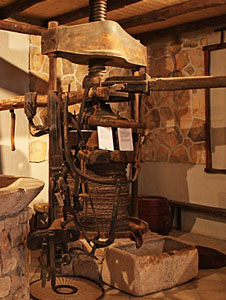 The island of Korcula is renowned for its rich cultural, architectural and archeological heritage, which is well preserved to this day. In fact, the entire island of Korcula is reminiscent of an open-air museum, a reminder of old times which have passed long ago. There are several museums in the town of Korcula: Town Museum where you can learn a lot about the history of the town of Korcula with many interesting exhibits ranging from, Bishop's Treasury with many religious artifacts, Museum of Icons with rich collection of religious icons, Museum House of Marco Polo, Museum of Maximilian Vanka who was a renowned Croatian painter. In the town of Blato there is a rich private ethnological collection "Barilo", where you can get detailed insight into the life and customs of the island of Korcula in times passed long ago. In the town of Vela Luka on the westernmost tip of the island Korcula there is an ethnological museum with very interesting exhibits from the life of old fishermen, sailors, farmers and merchants. Click to find out more information about museums on the island of Korcula.
The island of Korcula is renowned for its rich cultural, architectural and archeological heritage, which is well preserved to this day. In fact, the entire island of Korcula is reminiscent of an open-air museum, a reminder of old times which have passed long ago. There are several museums in the town of Korcula: Town Museum where you can learn a lot about the history of the town of Korcula with many interesting exhibits ranging from, Bishop's Treasury with many religious artifacts, Museum of Icons with rich collection of religious icons, Museum House of Marco Polo, Museum of Maximilian Vanka who was a renowned Croatian painter. In the town of Blato there is a rich private ethnological collection "Barilo", where you can get detailed insight into the life and customs of the island of Korcula in times passed long ago. In the town of Vela Luka on the westernmost tip of the island Korcula there is an ethnological museum with very interesting exhibits from the life of old fishermen, sailors, farmers and merchants. Click to find out more information about museums on the island of Korcula.
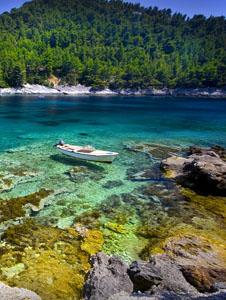 The island of Korcula is famous for its lush vegetation, and it is probably the greenest Adriatic island. Korcula within itself is full of diversities, and one of them is the difference between the north and the south coast of the island. The north coast of the island is mild, easily accessible, with shallow water, while the south coast of the island Korcula is reminiscent of Norwegian fjords, with high, steep cliffs rising from the sea. South coast is hardly accessible by road, there are only several tarmac roads that lead to the south coast, and other roads are dirt roads, which we do not recommend using unless you have a suitable car. On the southern side of the island, there are numerous small hidden bays which are ideal for those who seek peace and tranquillity and are into exploring and finding new spots. Even though the north coast of the island is more accessible, it is still possible to find a peaceful spot for yourself. We invite you to explore these magnificent bays and beaches of the island of Korcula. Find out more information about beaches, bays and coves of the island of Korcula.
The island of Korcula is famous for its lush vegetation, and it is probably the greenest Adriatic island. Korcula within itself is full of diversities, and one of them is the difference between the north and the south coast of the island. The north coast of the island is mild, easily accessible, with shallow water, while the south coast of the island Korcula is reminiscent of Norwegian fjords, with high, steep cliffs rising from the sea. South coast is hardly accessible by road, there are only several tarmac roads that lead to the south coast, and other roads are dirt roads, which we do not recommend using unless you have a suitable car. On the southern side of the island, there are numerous small hidden bays which are ideal for those who seek peace and tranquillity and are into exploring and finding new spots. Even though the north coast of the island is more accessible, it is still possible to find a peaceful spot for yourself. We invite you to explore these magnificent bays and beaches of the island of Korcula. Find out more information about beaches, bays and coves of the island of Korcula.
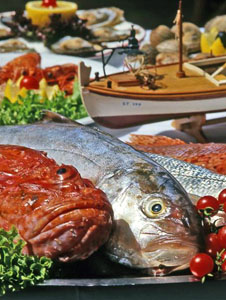 It is widely accepted that Mediterannean cuisine is very beneficial to health and longevity, and is amongst healthiest cuisines in the entire world. Fish and other seafood oil, organically grown vegetables and fruits, wine - all this you can find in abundance and variety throughout the island of Korcula. Like most of modern tourst destination, the island of Korcula is fool of small fast food venues, that offer pizzas, sandwiches and similar foodstuff. But, the island of Korcula also offers more and more slow food traditional restaurants and taverns, and slowly the island of Korcula is becoming one of the most recognisable islands in relation to local gastronomy on the Croatian Adriatic, which brings increasing number of gastro-tourists every year to the island Korcula. Korcula is also renowned for its wines, especially the region of Lumbarda, where he famous white wine "Grk" is grown and the region of Smokvica and Cara, in the interior of the island which offer also white wines "Posip" and "Rukatac". It is interesting to note that Korcula is renowned for white wines, even though Dalmatia is best known for red wines, mainly "Plavac Mali". Here you can find some additional information about the gastronomy of the island of Korcula.
It is widely accepted that Mediterannean cuisine is very beneficial to health and longevity, and is amongst healthiest cuisines in the entire world. Fish and other seafood oil, organically grown vegetables and fruits, wine - all this you can find in abundance and variety throughout the island of Korcula. Like most of modern tourst destination, the island of Korcula is fool of small fast food venues, that offer pizzas, sandwiches and similar foodstuff. But, the island of Korcula also offers more and more slow food traditional restaurants and taverns, and slowly the island of Korcula is becoming one of the most recognisable islands in relation to local gastronomy on the Croatian Adriatic, which brings increasing number of gastro-tourists every year to the island Korcula. Korcula is also renowned for its wines, especially the region of Lumbarda, where he famous white wine "Grk" is grown and the region of Smokvica and Cara, in the interior of the island which offer also white wines "Posip" and "Rukatac". It is interesting to note that Korcula is renowned for white wines, even though Dalmatia is best known for red wines, mainly "Plavac Mali". Here you can find some additional information about the gastronomy of the island of Korcula.
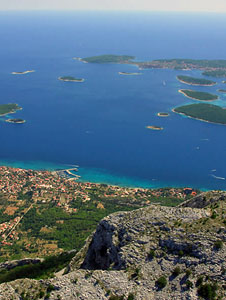 Experiencing the island of Korcula from the sea is a completely different experience. From the sea, dense forests of black Aleppo pine and cypress trees of this mountainous island open up to show its hidden coves, beaches, towns and villages like precious pearls. Surrounded by fascinating archipelago of small islands and islets, this part of Croatian coast is probably the most inviting for hobby seafarers, sailors and explorers. From the waters of Lumbarda, where there are "Skoji" islands, a group of 20 islets, across "Badija", "Vrnik" and "Stupe" just in front of the town of Korcula, and all the way to Vela Luka and it's islands "Proizd", "Osjak", "Prznjak" and "Trstenik" one can spend an entire holiday just exploring these small, beautiful, untouched islands and islets. And if you add to that visit to nearby islands of Prznjak and Trstenik one can spend an entire holiday just exploring these small, beautiful, untouched islands and islets. And if you add to that visit to nearby islands of Mljet, Hvar, peninsula Peljesac and the archipelago of Lastovo island, one can truly say that the island of Korcula is the place for renting a boat, either a small motor boat, a sailing boat or a speed boat. You can find lots of boats in the offer when you arrive to the island of Korcula, and if you would like to rent a rubber inflatable speedboat, please check our offer.
Experiencing the island of Korcula from the sea is a completely different experience. From the sea, dense forests of black Aleppo pine and cypress trees of this mountainous island open up to show its hidden coves, beaches, towns and villages like precious pearls. Surrounded by fascinating archipelago of small islands and islets, this part of Croatian coast is probably the most inviting for hobby seafarers, sailors and explorers. From the waters of Lumbarda, where there are "Skoji" islands, a group of 20 islets, across "Badija", "Vrnik" and "Stupe" just in front of the town of Korcula, and all the way to Vela Luka and it's islands "Proizd", "Osjak", "Prznjak" and "Trstenik" one can spend an entire holiday just exploring these small, beautiful, untouched islands and islets. And if you add to that visit to nearby islands of Prznjak and Trstenik one can spend an entire holiday just exploring these small, beautiful, untouched islands and islets. And if you add to that visit to nearby islands of Mljet, Hvar, peninsula Peljesac and the archipelago of Lastovo island, one can truly say that the island of Korcula is the place for renting a boat, either a small motor boat, a sailing boat or a speed boat. You can find lots of boats in the offer when you arrive to the island of Korcula, and if you would like to rent a rubber inflatable speedboat, please check our offer.
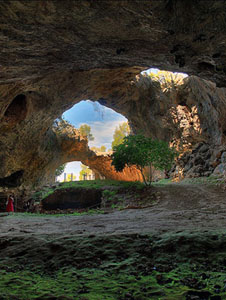 The best beaches in this green and rocky island hide in the south and lay bare the secret of its waters: Dalmatian stone background reflects sunlight so hard that sea becomes miraculously atoll-like with emerald and turquoise shades. Since island Korcula is rather rocky island, especially the south coast, there are not as many beaches as in some other regions of Dalmatia. There is a reasonable number of very beautiful beaches, and we think that this is better option, since large number of beaches attracts too many mass-tourists, which does not allow quality tourism to develop. Long streams of beaches are also monotonous from the view point of marine life, since fish and other sea life prefers rocky shores to develop. The are on the island of Korcula with best beaches is definitely the area of Lumbarda, where there are several pebble and sandy beaches. On the south side of the island one can find beautiful coves with pebble beaches, and on the north side of the island there are several sandy beaches. The are around Vela Luka on the western tip of the Korcula island is also abundant with nice beaches. More information about beaches on the island of Korcula can be found here.
The best beaches in this green and rocky island hide in the south and lay bare the secret of its waters: Dalmatian stone background reflects sunlight so hard that sea becomes miraculously atoll-like with emerald and turquoise shades. Since island Korcula is rather rocky island, especially the south coast, there are not as many beaches as in some other regions of Dalmatia. There is a reasonable number of very beautiful beaches, and we think that this is better option, since large number of beaches attracts too many mass-tourists, which does not allow quality tourism to develop. Long streams of beaches are also monotonous from the view point of marine life, since fish and other sea life prefers rocky shores to develop. The are on the island of Korcula with best beaches is definitely the area of Lumbarda, where there are several pebble and sandy beaches. On the south side of the island one can find beautiful coves with pebble beaches, and on the north side of the island there are several sandy beaches. The are around Vela Luka on the western tip of the Korcula island is also abundant with nice beaches. More information about beaches on the island of Korcula can be found here.
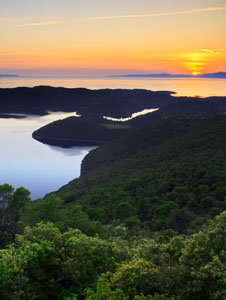 The island of Korcula is a very diverse island, and one can visit it many times and not nearly get to know the island completely. But, the island of Korcula is located in very beautiful, southern part of Croatian Adriatic, surrounded by famous islands like Hvar, the island of Mljet which is a national park, the island Lastovo with it's archipelago (park of the nature) and with its own archipelago, taking a boat excursion to get to know some of these island is absolutely the thing to do while on Korcula. The main hub for the excursions from the island of Korcula is the town of Korcula, on the eastern tip of the island. There are smaller taxi boats which take passengers from and to nearby smaller islands like Badija, and larger boats that take tourist to islands further away like Mljet, Hvar, Lastovo and peninsula Peljesac. From the town of Korcula there are regular ferries to Dubrovnik and peninsula Peljesac. From Vela Luka there are ferries to Split and Lastovo and catamaran to Split, the island of Hvar and the island of Lastovo. From Prigradica on the island of Korcula thee is a catamaran to the town of Hvar and Split. Click here to find out more details about excursions from the island of Korcula and here to find out more about ferry and catamaran schedules and prices for the island of Korcula.
The island of Korcula is a very diverse island, and one can visit it many times and not nearly get to know the island completely. But, the island of Korcula is located in very beautiful, southern part of Croatian Adriatic, surrounded by famous islands like Hvar, the island of Mljet which is a national park, the island Lastovo with it's archipelago (park of the nature) and with its own archipelago, taking a boat excursion to get to know some of these island is absolutely the thing to do while on Korcula. The main hub for the excursions from the island of Korcula is the town of Korcula, on the eastern tip of the island. There are smaller taxi boats which take passengers from and to nearby smaller islands like Badija, and larger boats that take tourist to islands further away like Mljet, Hvar, Lastovo and peninsula Peljesac. From the town of Korcula there are regular ferries to Dubrovnik and peninsula Peljesac. From Vela Luka there are ferries to Split and Lastovo and catamaran to Split, the island of Hvar and the island of Lastovo. From Prigradica on the island of Korcula thee is a catamaran to the town of Hvar and Split. Click here to find out more details about excursions from the island of Korcula and here to find out more about ferry and catamaran schedules and prices for the island of Korcula. 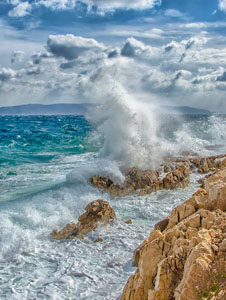
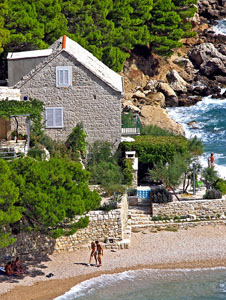 Do not worry - it is always possible to find accommodation on spot, once you arrive to the island. No matter how good the season is on the island, there are always more beds than there are visitors, which is the beauty of Croatian private accommodation market. However, if you choose to book when you arrive, you are usually left with low standard accommodation. This is the reason why we recommend our guests to book their apartment or holiday house in advance. One advantage of booking on-line is having the possibility to actually see the accommodation before you book it - having this in mind, we did our best to provide our clients with most comprehensive and most detailed description of accommodation in our offer. We provide very detailed information about accommodation unit and the house it is located in, the exterior and surroundings, beaches, additional offer and almost any information you can imagine, all together with lots of pictures. Feel free to check our offer of private Korcula accommodation. We also offer on-line booking of Korcula hotels.
Do not worry - it is always possible to find accommodation on spot, once you arrive to the island. No matter how good the season is on the island, there are always more beds than there are visitors, which is the beauty of Croatian private accommodation market. However, if you choose to book when you arrive, you are usually left with low standard accommodation. This is the reason why we recommend our guests to book their apartment or holiday house in advance. One advantage of booking on-line is having the possibility to actually see the accommodation before you book it - having this in mind, we did our best to provide our clients with most comprehensive and most detailed description of accommodation in our offer. We provide very detailed information about accommodation unit and the house it is located in, the exterior and surroundings, beaches, additional offer and almost any information you can imagine, all together with lots of pictures. Feel free to check our offer of private Korcula accommodation. We also offer on-line booking of Korcula hotels.
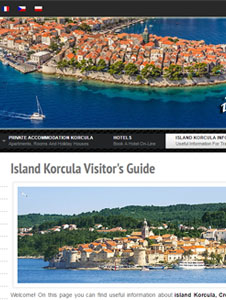 We did our best to prepare for you the most comprehensive travel guide of the island of Korcula, with lots of interesting and important information available in 8 different languages and we are constantly adding new information. On www.ikorculainfo.com you can find very detailed information about each place on the island, general information about the island of Korcula and important information for travellers. If you need additional information you can always contact us and we will do our best to help you organise your trip to the island of Korcula.
We did our best to prepare for you the most comprehensive travel guide of the island of Korcula, with lots of interesting and important information available in 8 different languages and we are constantly adding new information. On www.ikorculainfo.com you can find very detailed information about each place on the island, general information about the island of Korcula and important information for travellers. If you need additional information you can always contact us and we will do our best to help you organise your trip to the island of Korcula.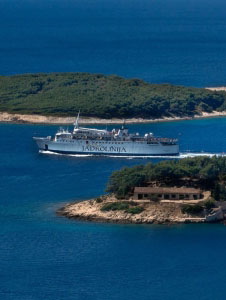 Ferry and catamaran connections are the heartbeat of the island of Korcula, and it is the only way to reach the island. Two main ports on the island of Korcula are in Vela Luka and in the town of Korcula. Vela Luka is connected with Split, the island of Hvar and the island of Lastovo. The town of Korcula is connected with Orebić on the peninsula of Peljesac, Drvenik near Makarska on the mainland, Dubrovnik, island of Mljet, island of Sipan and the island of Lastovo. From Prigradica on the island of Korcula there is a catamaran to the town of Hvar and Split. We have prepared for you the list of available ferry lines with schedules and prices on the island of Korcula.
Ferry and catamaran connections are the heartbeat of the island of Korcula, and it is the only way to reach the island. Two main ports on the island of Korcula are in Vela Luka and in the town of Korcula. Vela Luka is connected with Split, the island of Hvar and the island of Lastovo. The town of Korcula is connected with Orebić on the peninsula of Peljesac, Drvenik near Makarska on the mainland, Dubrovnik, island of Mljet, island of Sipan and the island of Lastovo. From Prigradica on the island of Korcula there is a catamaran to the town of Hvar and Split. We have prepared for you the list of available ferry lines with schedules and prices on the island of Korcula.Korcula port authority - http://www.portkorcula.eu/
Korcula tourist board - http://www.visitkorcula.eu/
Official web site of the municipality of Korcula - http://www.korcula.hr/
Wikipedia page on Korcula - https://en.wikipedia.org/wiki/korcula
Korcula info portal - http://www.ikorcula.net/
Medical center Korcula - http://dom-zdravlja-korcula.hr/
Sport objects Korcula - http://www.sportkorcula.com/
ACI marina Korcula - http://www.aci-marinas.com/aci_marina/aci-korcula/?lang=en
Croatia is central European and Mediterranean country, which boasts with one of the worlds most astonishing coasts and rich and diverse cultural heritage. Through its history, Croatia has always been part of the European cultural circle and civilization, from ancient times, through the middle ages and finally to modern times. Pope Leo X called Croatia the Antemurale Christianitatis (Latin for "Bulwark of Christianity") in 1519, because of significant contributions made by Croatian soldiers to the struggle against the Turks. The advancement of the Ottoman Empire in Europe was stopped on Croatian land, which could be in this sense regarded as a historical gate of European civilization. Even though Croats are among oldest European nations, only recently did they finally gained independence by defending Croatia from Serbian aggression in a bloody war, and re-established independent Republic of Croatia, after 888 years.
Today, Croatia is part of the European Union. Geographically, Croatia consist of three distinct regions. North and eastern part of the country are covered by rich plains, and on the south beautiful coastline stretches for 1,777 kilometers along the shores of the east Adriatic sea. Croatian Adriatic has exactly 1,185 islands, islets and reefs. Between the coast and the plains, in the central Croatia, mountainous ranges are located, fabulous mountain range Velebit and peaks of Lika and Gorski Kotar. Indeed it is hard to find such diversity in much larger countries – please have in mind that Croatia is a small country, with population of something above 4 million, but still it has Pannonian plains, Mediterranean coast and high mountain ranges, and all the cultural differences that come with these different habitats.
Croatia is increasingly popular tourist destination, mainly because of it’s unique coast which has so much to offer to visitors from all over the globe. Croatia has very long tourist tradition, and local people are very hospitable, welcoming and friendly. Most of the local population speaks English, with other popular languages being Italian and German. Croatia is a secure country, with very low crime rates, it has very good infrastructure and it is in all senses a modern European country. We invite you to visit our beautiful country and check this by yourself – we are sure that you will come back again.
 Mljet is southermost populated Croatian island, which is famous for it's natural beauty. The western part of the island is a national park, with beautiful and unique sweetwater lakes, lush vegetation and rich marine and animal life. On the eastern part of Mljet some of the most beautiful Croatian sand beaches are located. Mljet is among most popular tourist destinations in Croatia for those that seek unspoiled nature and peaceful family vacation - we invite you to explore this beautiful island.
Mljet is southermost populated Croatian island, which is famous for it's natural beauty. The western part of the island is a national park, with beautiful and unique sweetwater lakes, lush vegetation and rich marine and animal life. On the eastern part of Mljet some of the most beautiful Croatian sand beaches are located. Mljet is among most popular tourist destinations in Croatia for those that seek unspoiled nature and peaceful family vacation - we invite you to explore this beautiful island.
 Peljesac is the longest Croatian peninsula, located between the delta od Neretva river and the island of Korcula. Its northern coastline encloses the gulf of Peljesac, famous for sea water quality which produces some of the best oysters in the world. The southern coastline of the peninsula is renowned for fantastic beaches, nature and most importantly, fantastic red wines of "Plavac mali" variety. The southern slopes of the peninsula Peljesac are the most famous Croatian wine growing area.
Peljesac is the longest Croatian peninsula, located between the delta od Neretva river and the island of Korcula. Its northern coastline encloses the gulf of Peljesac, famous for sea water quality which produces some of the best oysters in the world. The southern coastline of the peninsula is renowned for fantastic beaches, nature and most importantly, fantastic red wines of "Plavac mali" variety. The southern slopes of the peninsula Peljesac are the most famous Croatian wine growing area.
 The ancient walled town of Dubrovnik is the most popular tourist destination in Croatia and among the most popular on the entire Mediterranean. This unique town with astonishing history and cultural heirtage offers so much to it's visitors that one needs to spend a month there just to begin to understand it's significance. The area of Dubrovnik riviera boasts with beautiful beaches and ancient small towns which are today popular tourist resorts with rich cultural and gastronomical offer.
The ancient walled town of Dubrovnik is the most popular tourist destination in Croatia and among the most popular on the entire Mediterranean. This unique town with astonishing history and cultural heirtage offers so much to it's visitors that one needs to spend a month there just to begin to understand it's significance. The area of Dubrovnik riviera boasts with beautiful beaches and ancient small towns which are today popular tourist resorts with rich cultural and gastronomical offer.
In order to provide you with the best online experience this website uses cookies. Delete cookies
By using our website, you agree to our use of cookies. Learn more
Privacy statement serves us for protection of privacy of our users. You can look at iKorculainfo.com pages for free, without any commitment of revealing your identity or leaving any kind of your private data. In case that you decide to use our services, it's necessary to leave us your personal data, so that we could complete your reservation and to lease asked service. Your personal data remains protected. We assure you that we are collecting only information that we need to complete our procedure of reservation of our service. In that process we are using only information that we receive directly from you.
Use of collected information
We are not going to use collected information for purposes that are not mentioned in this statement. Your personal data, travel agency "Vakance" does not sell, trade, rent or give to third parties, unless it's necessary for the procedure of the realization of selected service. |







